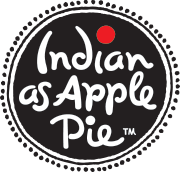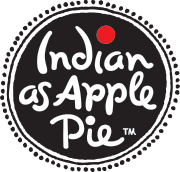August 26, 2013 8 Comments
It’s a well known fact that I’m a single mother of two little girls during the week. My husband has traveled for our entire 13 years of marriage – often leaving on a Monday and returning on a Thursday, Friday, and even Saturday morning at times. When he returns, I hear the predictable, “What’s for dinner?”
This question is often met with a simple, one-word answer: ‘Dal’.
Despite the fancy dinners my husband gets to enjoy when on the road consulting and schmoozing clients – the only thing he truly craves is a deep, steaming bowl of freshly-made dal (also known as daal). Essentially, spiced lentil porridge. It sounds ridiculously simple. Too simple, in fact. How could lentils actually be enticing? I mean, to even win out as a dinner of choice over a steak, take-out Chinese, and deep dish pizza?
“The thought of eating it bores me, but when I sit down to actually eat it – it’s perfect. I never want anything else,” my husband insists.
Below, find my most basic of basic recipes, along with some cooking guidelines.
Well. None. Hindi is a phonetic language, meaning it’s spoken the way it’s written and when you translate it to English, that could be left to a tiny bit of interpretation. Maybe you say dal with a short ‘a’ or daal by drawing out the ‘a’ sound. You’ll see it written in English both ways. I typically use the form that I find most commonly already out there. Most dals are lentils, unless someone is using the word dal to refer to a dish made from a split pea or other legume. Generally, South Asians refer to cooked lentils as dal.
The term dal refers to the ingredient AND the final dish. It is a broad term that refers to legumes (lentils, peas, and beans) that are cooked and spiced to perfection. This term can lead to some confusion in the West. For example, you have chana dal, a well-known split legume that is yellow in color and looks like a split pea. In fact, it is the split and skinned version of a black chickpea. Though technically it should be called a split chickpea, it’s still considered a dal likely because it does resemble a lentil once split and skinned. Confusing? A little. But, know that any derivation of legumes can be generally referred to as a dal. So the word dal and the word lentil are to an Indian mind pretty much the same thing. Note, that when we refer to bean dishes we tend to call the dish by its specific name. So, a kidney bean dish is not called a dal, but rajmah. White chickpeas spiced and cooked are called chana, and so on and so on. We almost reserve the term dal more for any kind of lentil and for certain split versions of certain beans and peas.
It sure can be. But, know that all legumes grow in pods, precisely why peanuts are legumes and not nuts. These seeds from the pods are dried and are referred to as ‘dal’. This one seed can then be offered in many ways. As is – whole with the skin on, whole without the skin, split with the skin, and split without the skin. The different forms have a variance in taste and cooking times. The more processed (meaning split and without the skin), the less time to cook, but the slightly less nutritious as well, meaning slightly less fibre and nutrients. If you are still confused, use my books as a guideline to dals and their Hindi and English names. Here’s another list that I found that might help as well.
You can. But, I like to say that you don’t need to. About 30 percent of Indians in India are vegetarian. Likely, you will offend someone by using a chicken or beef stock. Spices enable us not to have to use flavor ‘crutches’ like stocks. We simply boil our lentils in water and then spice them. I have never in 44 years seen an Indian use a stock to make dal.
I recommend cooking your dal in a roomy and heavy pot. Lentils expand as they cook, and you never want to cook them in a pot that’s too small. If the pot is too thin, the lentils can burn on the bottom. To avoid this, get in there and mix your dal every once in awhile as it cooks. In this New York Times piece by Mark Bittman on Dal, he talks about using a mathani to whisk and beat the dal. I like this piece, because even I learned something new! I’ve never seen anyone in my family or in the commercial kitchens in India that I’ve visited use this device. If you can get your hands on one, great. But, note that you don’t need one to successfully make dal. If you want your lentils to be smoother, just use a whisk or an immersion blender towards the end.
Because you got it right. We typically make our lentils into a soup-like consistency, rather than cook them al dente, as is typically done in the West. A dal cooked al dente is a sukhi (dry) dal. Check out my recipe at the end of this post.
In Indian households, we eat our dal with roti, rice, or dosa. With the carb component you have a complete protein and an amazing meal at that. I encourage folks that take my classes to think of dal as a side to bread and/or rice or as a soup. I often have a bowl of dal even ahead of dinner or an event out so that I don’t overdo it on the heavy stuff later.
Always remember when cooking lentils on the stovetop you are looking at about 3-4 cups of water for every cup of lentils. Now, that will vary depending upon how you cook it – is the pan covered or not? Also, the type of lentil will make a difference in terms of water. So, a fast-cooking yellow lentil (moong) will take less water than a longer-cooking black lentil (urad), for example. If you have soaked the lentils ahead of time, you’ll use about a cup less water. Us this proportion as a simple guideline.
Some prefer to soak legumes to help them produce less gas upon eating. If you have the time, sure do it. But typically I don’t (have the time, that is)..so I rarely soak much – I dump and go. And, I’ve never been overly gassy, frankly. I think the gas issue is more of a problem if you are not used to eating lentils on a regular basis. If you want to play it safe, soak your lentils in boiled water (I always keep a kettle handy) for about an hour. If you have the time, soak them in room-temperature water overnight.
When I bring a bag of dal home, the first thing I do is clean it and remove any debris or small rocks. This is most important with darker dals like urad. It’s never a good feeling to bite into this piece of debris once cooked, so the easiest way to deal with it is upfront. The way most Indian homes do this, is put about a cup of dried dal on a large, white plate. Pour it in a mound furthest away from you. Then with one hand, gradually pull the lentils towards you, picking out debris if you see any along the way and discarding it. Once finished with this plate, put the lentils into a large storage container (preferably glass) and continue until you are finished. Note that Indian grocers are notorious for having ‘dirty’ legumes. When cleaning your lentils always consider the source. The more mainstream grocers seems to be better at giving you cleaned lentils. Whole lentils also tend to be dirtier than split and skinned lentils for some reason. In any case, you’ll never ever go wrong taking a few minutes to clean your lentils. And, if you have kids around, believe me, this is a task they love! As a quick note, never ever wash your lentils and then store them outside the fridge. They go bad fast! They must be stored dried. If you do soak them or wash them and then need some time before you cook them, just store them in the fridge.
If you can’t get enough reading about lentils, check out this fun piece from the Chicago Tribune. I was even quoted!
I hope I’ve put many of your questions about dal to rest. Please find one of my favorite go-to recipes below. Enjoy!
3 cups masoor dal, cleaned and washed
9 cups water
3 tablespoons ghee or oil (I prefer grapeseed)
pinch of asafoetida or hing (optional)
1 tablespoon cumin seeds
1 teaspoon turmeric powder
1 medium white or red onion, finely diced (1 cup)
1 pinch of coarse white sea salt
1/4 cup grated ginger
2 cloves garlic, peeled and minced (1 heaping tablespoon)
2-3 Thai chiles, stems removed and finely chopped
2 – 3 teaspoons garam masala
2-3 teaspoons coriander powder
1 – 2 teaspoons red chile powder
2 – 3 teaspoons coarse sea salt
1 heaping tablespoon chopped cilantro

Note: You can also add a diced tomato, just after cooking the ginger and garlic. Also, though this lentil is reddish and salmon-colored when dry, it cooks to an almost yellow color. I know! I know! Confusing!
This recipe makes about 12 cups. More pictures are on their way!
If you liked this post and recipe, you might also want to try my recipe for dried lentils made Indian-style.
December 29, 2021
Would this recipe work for brown, black, or other color lentils as well?
April 27, 2020
It was absolutely delicious!!!.. Thank You.
April 06, 2020
Make your own dal. It is far tastier and healthier than frozen instant meals, which are loaded with sodium. There are not many ingredients involved and once you have the spices they’ll last a long time.
April 06, 2020
Loved this recipe, thanks for sharing it! It has a really earthy flavour compared to other Dals I’ve made. It’s pretty heavy on cumin, I think one could easily half the cumin and still end up with a great dish.
April 06, 2020
Anupy! Thank you so much for just being yourself! You’re refreshingly delightful! : )
I found your page by stumbling upon it, trying to find out if I can eat raw (chopped) dried peas. …I don’t care that I didn’t find out – because you made smile on the inside. : )
Thank you & Bless you!!!
December 05, 2016
I have just started eating Indian Food at restaurants.I find it absolutely delicious – I am now starting to buy packaged – ready to eat food such as INDIANLIFE – Dal Mix etc. Fantastic snacks and also mixed in with western foods. Goes great with Salmon and other Sea Food Dishes. I will be experimenting a lot from here on forward. If you have suggestions for a great indian meal I would appreciate it as we have just became friends
with a new neighbour from India who are now new Canadians.
April 06, 2020
Great, im making this recipe tonight :-)
Thank you!
Comments will be approved before showing up.


Melissa
May 19, 2022
Thank you for sharing this. It has become a staple in our home.